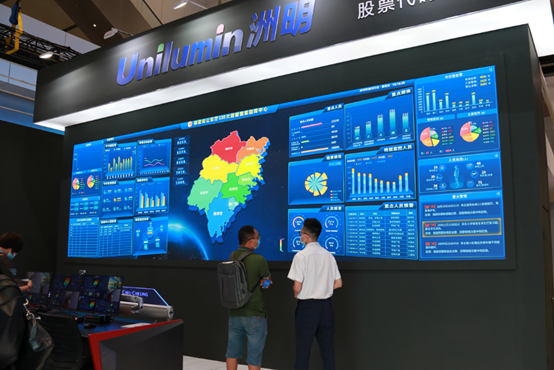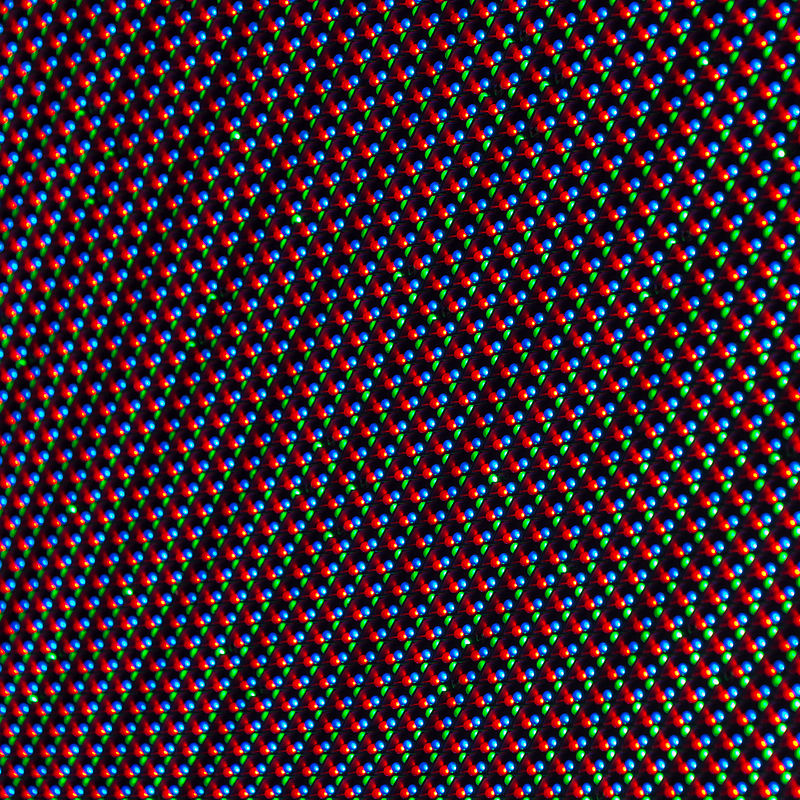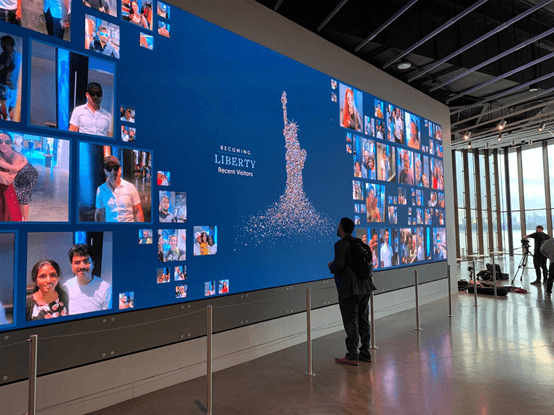Best Info For Picking Led Rental Screen
Wiki Article
How Important Is The Importance Of Pixel Pitch And Resolution In The Research Of Led Displays?
When viewing LED displays it is crucial to consider the resolution as well as pixel pitches. These two factors directly affect the clarity and detail of the display as well as the overall experience. They are important because of reasons that are listed below:
1. Image Quality
Pixel Pitch: The distance between the centers of each LED pixel as well as the centers of the following pixels is called the pixels pitch. A smaller Pixel Pitch indicates that the pixels are larger and thus have a higher resolution and higher pixels per. This results in sharper, more detailed images, especially important for content with intricate details or text.
Resolution: The number of pixels is displayed on the screen. It is usually expressed in the form of height and width (e.g. 2048x1080). The larger the resolution, more detailed the display will be. This also provides a more immersive and natural experience. This is particularly important when you are viewing screens with large sizes.
2. Distance to view
Pixel pitch has an important impact on the viewing distance. A smaller pixel size (and hence a higher resolution) are essential for displays that will only be viewed at close range. This includes indoor screens, such as those employed in retail or for exhibitions. A larger pixel size may be sufficient for large outdoor displays or billboards that are seen from a distance.
3. Content Versatility
Displays with smaller pixels and a higher resolution are able to display a range of content. This includes high-definition movies, intricate graphics, and small text. This versatility is important for applications which require the use of dynamic content. Digital signage is one example, as are broadcast studios and control rooms.
4. Costs
A smaller pixel pitch could offer better image quality however, it also increases the price of the display. Due to the higher quantity of LEDs required screens with a greater resolution cost more to build. Thus, it's important to balance the need for high resolution with the budget, taking into account the purpose and the viewing distance.
5. Application Specificity
The importance of pixel pitch and resolution can vary depending on the specific application:
Indoor Displays: A smaller pixel pitch (e.g. 1.2mm up to 2.4mm) is usually required to attain high resolution at close distances.
Outdoor Displays - Can be larger in pixels (e.g. a pixels pitch of 4mm-10mm) since they are seen from a greater distance, and therefore, high resolution might not be necessary.
6. The longevity and upgradeability
The display's pixel pitch decreases as technology improves, allowing higher resolutions to be displayed on smaller areas. If you buy the latest display technology with an ideal pixel pitch it can remain effective and useful for the course of a longer time.
Conclusion:
Pixel resolution and pitch are the primary determinants of the performance of LED displays especially in terms of image quality, viewing experience and content flexibility. For you to ensure that you select the display that meets your needs, take into consideration the following factors when researching LED screen options. Read the recommended 3d led display for site tips including outdoor digital display, led board, display light led, display light led, led in the wall, led panel transparent, led rental screen, led screen for outdoor, translucent led screen, led panel rental and more.

How Important Is The Angle Of View When You Are Researching Led Displays?
When researching LED displays The viewing angle is an important aspect to take into consideration. This is especially true when it comes to applications that need the display to be viewed at different angles and positions. Here are a few reasons the angle of viewing is crucial:
1. Uniform Image - Quality
The viewing angle is the highest viewing angle that a LED display can be viewed at in a satisfactory manner. This is usually measured using terms like intensity and color consistency. The viewing angle can be determined in both vertical and horizontal directions.
The importance of a wider viewing angle ensures that the image quality remains constant regardless of where the viewer is positioned relative to the display. This means colors do not shift and brightness does not decrease when viewing from the side or above/below.
2. Experience of Audience
The impact of large venues. In large venues such as concert halls, stadiums or conference centres, audience members are spread across a vast area. The more narrow the angle at which they can view, the worse it is for those who are seated at an acute angle towards the screen.
Application for large-scale installations or events in which the public is positioned in a wide circle around the display, a wide viewing angle is required to ensure everyone has an unobstructed and vivid view of the content.
3. The suitability of public Spaces
Public Displays For settings such as shopping malls, transportation hubs or even outdoor advertising viewing angles are critical because people will be viewing the display from a variety of angles. A narrow angle of view could hinder the ability of a display's ability to draw and draw attention of passers-by.
Application Digital signage: When utilized in public areas The large viewing angle can increase the visibility of the sign. This makes sure that information is easily visible from all angles and appears attractive.
4. Content Consistency
Color and brightness uniformity displays with poor viewing angles may show color shifts or drops when viewed by positions off-center. This issue could be a problem for content that is brand-related, and the accuracy of color is crucial.
Application: When brand identity and uniformity of color are important, as in retail display cases or corporate settings A wide-angle view angle ensures that your display maintains its style from any viewing position.
5. Installation Flexibility
Flexibility of placement The flexibility of a display with an extensive viewing angle can allow greater flexibility in terms of the places it can be. This gives you more creative choices in terms of location. For example the display could be wrapped around columns or put in locations where different viewers approach.
Application: A wide viewing angle is ideal for LED displays that are creative or architectural LED displays. They can be utilized in galleries and museums to create a sense of immersion.
6. Performance of Rental and Staging
Event Setting: When renting or staging displays, that can be set up in a variety of configurations, the wide viewing angle ensures that they perform well regardless of where audiences are positioned.
Application for events, concerts, or trade shows, where the audience may change locations or where the display is visible from various locations, a wide viewing angle guarantees that all participants have a clear and engaging experience of the information.
7. Impact of ROI
Maximizing the impact of your visuals Wide-angle displays can be more engaging to a wider audience and can increase the impact of the display as well as return on investment. This is especially true of advertisements or informational screens where visibility is essential to the desired outcome.
Application: In commercial installation, making sure that the display can be viewed at different angles can increase the amount of engagement and thus, the efficiency of content being displayed.
Conclusion:
The angle of viewing is an important factor which affects the efficiency and the visibility of an LED screen. This is particularly important in environments with an extensive audience, displays that may be observed from various angles, or when the consistency of content is essential. When researching LED displays, an expansive viewing angle should be considered first to ensure the display is able to meet the requirements of the specific use case and offers a superior viewing experience for all viewers. Have a look at the best led rental screen for website examples including led on screen, digital display, transparent led panel, wall screen, transparent screen, flexible led screen, advertising tvs, church video wall, led board rental, led screen rental and more.

How Important Is Cost, Roi And Energy Efficiency When Researching Led Displays?
The cost, return on investment (ROI) and energy efficiency are all important factors to consider when researching LED display options. These three factors directly impact the viability of financials and the benefits in the long term, and operating costs. What are the main reasons behind each factor?
1. Initial Cost
Budget Considerations. The initial cost for purchasing LED displays is significant to the overall success of any endeavor. It is not only the price of the display itself but also the cost of the installation, mounting structure, as well as any accessories required.
Quality and. Although lower-cost displays might seem attractive at first, they could be a compromise in quality, durability or other features. The initial cost must be evaluated against the performance and lifespan of the display.
In cases where budgets are tight, careful consideration is needed of both the performance and price. For instance, expensive displays could be required for crucial applications such as advertising in prime locations, while more economical alternatives might be adequate in less demanding settings.
2. Return on investment (ROI).
Revenue Generation: ROI is often tied to the ability of LED displays to generate revenue. This can be through advertising, customer engagement or brand recognition. Displays that provide compelling content and effectively captures the attention of customers can yield a significant return on investment through sales or advertising.
Durability and long-term durability: Displays with longer lifespans and greater durability are more likely to have a better ROI, as they require less maintenance and replacement. Investing more upfront can save you money over the long run.
Effect of features on ROI Features such as high resolution large viewing angles, wide resolution and high brightness can add to the initial price, but also significantly enhance the effectiveness of the display, resulting in better ROI through improved audience engagement and the ability to see.
3. Energy Efficiency
Operating Costs The energy effectiveness of LED displays is crucial to reducing ongoing operating costs. Displays that consume less power will result in lower electricity costs. This is especially important when it comes to large displays, or displays that run 24/7.
Environmental Impact: By reducing carbon footprints, energy-efficient displays can contribute to sustainability. This is crucial for companies and businesses that have a commitment to sustainability or must comply with regulations governing energy usage.
Long-Term Savings: While energy-efficient displays might have a higher initial price, the savings in electricity costs over the life of the display can be significant, which can boost the ROI overall.
Application: When installed in areas that have significant electricity costs or large installations, energy efficiency will make a difference in the overall cost of operation.
4. Total Cost of Ownership
Maintenance and Repairs. Total cost of ownership doesn't only include the initial purchase price, it also includes all expenses related to maintenance, repairs and downtime. Displays that are more durable and last longer typically provide lower TCO which makes them the most cost-effective option in the long run.
Scalability and Upgrades - Take into consideration how easy it is to expand or upgrade the system of display. A modular display that can be updated or expanded with minimal costs is a great long-term investment.
Displays to be used: If the displays are planned to be utilized for a long period of time in environments such as public spaces or in corporate settings that are crowded, the TCO is crucial to ensure that investment will remain cost-effective.
5 Lease Option and Financing
Flexibility in Financing - Many providers offer flexible financing options which can help to reduce the initial costs of high quality displays. This is particularly beneficial for businesses that need to preserve cash flow and still invest in digital signage.
Options for evaluating ROI: Leasing could also affect ROI since they let businesses move to more modern technology without the need for a large initial investment, ensuring that the displays remain cutting-edge and effective in generating yields.
6. Market Competitiveness
Cost in comparison to. Cost and ROI of your LED display can influence your ability to compete. A better-performing display will help you to stand out from your rivals. This will attract more customers and clients which will result in a higher return on investment.
Application: In fields that are highly competitive, such as entertainment or retail like the entertainment industry, investing in high-end displays can help you gain an edge.
Conclusion:
In order to determine the worth and advantages of investing in a display with LEDs it is crucial to take into account factors like cost as well as ROI and energy efficiency. By balancing an initial cost and the expected return, including energy efficiency and operational costs as well as calculating the total cost of ownership you can ensure that your display will be able to meet expectations for performance and financial goals. These factors will allow you to make an informed choice that is in line with your budget, goals, and plan. Have a look at the best flexible advertising boards for website advice including led display screen rental, outdoor led display screen, led screen for outdoor, transparent screen, flexible led display screen, outdoor led screen, wall tv led, flexible led display screen, led light sign board, led wall tv and more.
